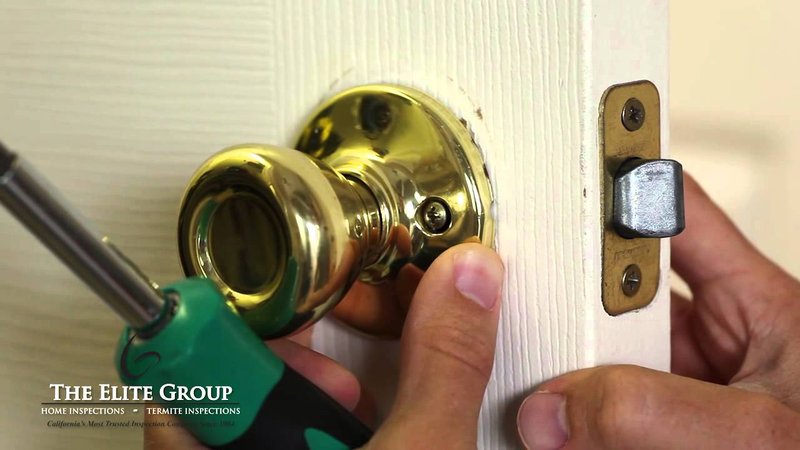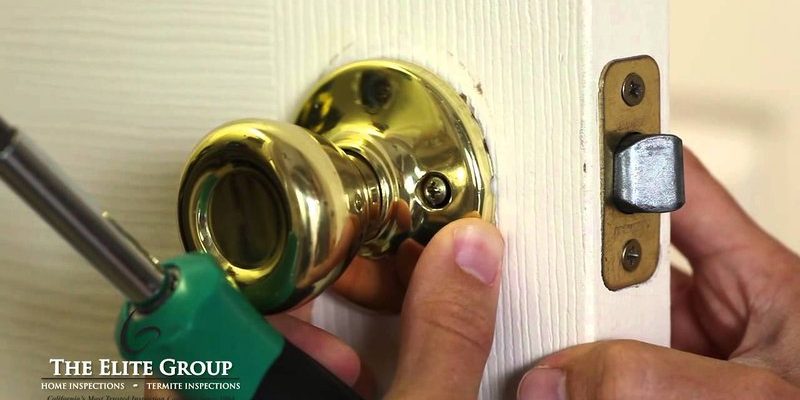
Picture this: you’re heading out, and the latch is that final check on your to-do list before locking up. Suddenly, it feels like you’re pushing against molasses when you try to close it. This issue can stem from various factors—think of it like your door latch is a musician who’s lost its rhythm. Let’s dive in and explore how to get that latch moving like it should.
Understanding How Your Door Latch Works
Before we roll up our sleeves and get into troubleshooting, it helps to know how a door latch functions. At its core, a door latch is designed to keep your door secure when closed. When you press down the latch, it retracts, allowing the door to open. Then it springs back to its original position when you release it, ready to provide security once again.
Imagine a rubber band: when you stretch it, it pulls away from its rest position. As soon as you let go, it snaps back. A door latch operates in much the same way. If the spring mechanism inside the latch—like the rubber band—isn’t functioning correctly, you’ll notice that it doesn’t return quickly or smoothly, which can lead to annoyance.
Signs Your Door Latch is Springing Back Slowly
Not sure if your latch is having issues? Here are some signs to look for:
- Delayed Response: You’ll notice that after pressing down the latch, it takes longer than usual to spring back.
- Sticking: The latch may feel like it’s sticking or catching instead of retracting smoothly.
- Noisy Mechanism: Listen for any unusual sounds, like grinding or squeaking, when engaging the latch.
- Physical Wear: Check for visible wear or damage on the latch or door frame that might be causing the issue.
Recognizing these signs early can save you a lot of time and trouble later on.
Common Causes of Slow Door Latch Response
There are several potential reasons for a door latch that springs back too slowly. Here are some of the most common culprits:
- Debris Build-Up: Dirt, dust, and grime can accumulate in the latch mechanism. Just like a car engine that needs a tune-up, latches need cleaning to function well.
- Rust and Corrosion: Metal latches can rust if exposed to moisture over time, leading to slower movement.
- Worn-down Springs: The internal springs can weaken with age or heavy use, causing sluggish operation.
- Misalignment: If the latch is misaligned with the strike plate, it can create friction and slow down the response.
Understanding these causes allows you to pinpoint the issue more effectively.
How to Clean Your Door Latch
Cleaning your door latch can often solve the problem of it springing back too slowly. Here’s how to do it in just a few steps:
1. Gather Your Supplies: You’ll need a screwdriver, a dry cloth, some lubricant (like WD-40), and a soft brush or toothbrush.
2. Remove the Latch: Use the screwdriver to carefully detach the latch from the door. Take care not to lose any small parts.
3. Clean the Parts: Use the dry cloth and soft brush to wipe away dirt and debris. Pay attention to the springs and crevices.
4. Apply Lubricant: Once clean, apply a small amount of lubricant to the spring mechanism. This ensures smooth movement when you engage the latch.
5. Reattach the Latch: Put everything back together and test it out. You should feel a difference!
Cleaning not only helps in functionality but extends the life of your latch.
Addressing Rust and Corrosion
If your latch is showing signs of rust or corrosion, here’s what to do:
1. Inspect the Latch: Look closely for rust spots or areas that feel gritty.
2. Remove the Rust: You can use sandpaper or a wire brush for minor rust. For heavier rust, a rust remover can be helpful.
3. Reapply Protective Coating: After cleaning, applying a rust-resistant spray or paint can protect the latch from further corrosion.
4. Regular Maintenance: Incorporate regular checks into your routine to catch rust early, just like you would with your car.
Taking care of rust issues early can prevent costly replacements down the road.
Checking for Misalignment
A misaligned door latch can be a sneaky culprit behind its slow return. Here’s how to check and realign it:
1. Close the Door: Gently close the door, but don’t latch it completely. Observe how the latch fits into the strike plate.
2. Look for Gaps: If there’s a gap between the latch and the strike plate, you may need to adjust it.
3. Adjust the Strike Plate: Loosen the screws on the strike plate and shift it slightly to align perfectly with the latch. Tighten the screws back up.
4. Test the Mechanism: After adjustments, test the latch to see if it moves more smoothly.
By ensuring everything is aligned, you’re creating a smooth pathway for that latch to spring back quickly.
When to Consider Replacement
If you’ve tried cleaning, addressing rust, and realigning but the latch still springs back too slowly, it may be time for a replacement. Here are signs that it’s best to go this route:
- Severe Wear: If the latch shows significant signs of wear or damage, replacement is often the best choice.
- Frequent Issues: If you’ve had to troubleshoot multiple times, it might be more cost-effective to invest in a new latch.
- Outdated Design: If your latch is older, newer models often operate much more smoothly due to improved designs.
Replacing a door latch isn’t usually complicated. Most can be done with a screwdriver and a little patience.
Final Thoughts
Dealing with a door latch that’s springing back too slowly can feel like an unwelcome guest lingering at the door. But by understanding how latches work, recognizing common issues, and knowing how to troubleshoot, you’re well-equipped to handle it. Regular maintenance, from cleaning to checking for rust and alignment, can keep your latch functioning smoothly.
So, the next time your door latch decides to take its time, you’ll know how to get it back in line. Remember, taking proactive steps can save you from bigger headaches down the road. Happy fixing!
